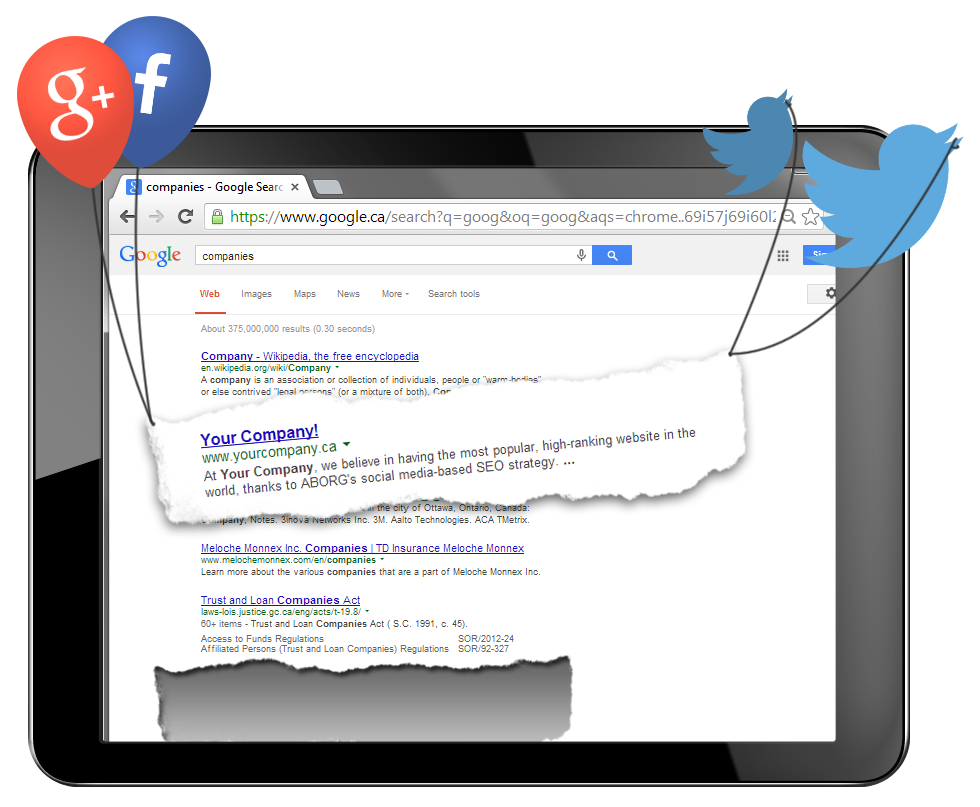7 Internet Marketing Tactics & Trends for 2014

Why There’s No Such Thing as “100% Uptime” in Web Hosting
September 3, 2013
How Social Media Will Affect SEO in 2014
January 6, 2014The ways we track user information and how we can use that information are evolving all the time. While traditional marketing mediums like TV, radio, newspapers are pretty consistent, there is always something new in the world of internet marketing.

Here are the top 7 internet marketing trends and tactics that are set to make a big impact in 2014. Keeping your business ahead of the curve and on the cutting edge means using these to your advantage.
Content (That’s Mobile-Friendly)
Modern-day internet marketing is all about the “pull”, not the “push”. This means that instead of slapping flashy messages in everyone’s faces and attempting to convince them to go buy your product (essentially what TV and radio does), it’s about creating an enticing “pull” that will draw people naturally toward you. This is done by creating content that’s interesting, entertaining, or insightful. This could be through a blog, ebooks, social media, infographics, etc. The more remarkable your content is, the more it gets passed around, and the more people come to your website out of their own interest.
Some companies have a whole marketing budget devoted solely to creating cool, original content.
You just want to make sure that after you put all that effort into creating content, that your website is mobile-friendly. With mobile users about to become the majority of all internet users, making sure these people can easily view your content is critical.
Visual Content
Expanding on the above, it’s ‘visual content’ that is making the most impact. With the increasingly short attention spans online, image-centered content is easy and quick to be consumed, and is being made all the more popular through social networks like Pinterest, Reddit, Imgur, and Instagram.
Remarketing
The latest form of online advertising, remarketing is the process of installing a special code on your site which will then implant a cookie on the browsers of your web visitors. When those visitors then leave your site without making a purchase, they will essentially be served ‘reminder ads’ over the course of a set time period through the Google Display Network – which include text and banner ads that appear on other websites, from blogs to high-profile news sites.
This new form of advertising is very effective in increasing conversions by driving people back to your site who have already been there. Remarketing can even be sophisticated enough to know what product you looked at, so as to show you ads of that specific product afterwards.
Example: try going to Amazon and adding an item to your wishlist – but don’t purchase it! Then keep watch on other sites for a little ‘reminder’.
More Loyalty Marketing
The internet gives the power to the consumer, from TripAdvisor to Google Places to HomeStars and all the rest of the review sites and social networks that facilitate the digital word of mouth. This transparency online and the ability to receive real customer reviews and experiences from others makes it harder for advertisers to ‘cover up what you might have heard and tell you why you should buy from them’.
Companies recognize this, and in doing so are putting a huge focus on rewarding their current customers – because they know loyal customers will be ambassadors for the brand and that their word-of-mouth online will go a long way in the minds of other consumers.
Not Just Facebook, Twitter, LinkedIn, and YouTube.
The same way TV started out with only a few channels until more and more branched off on all sorts of niche subjects, the same is happening to social networks. There are multitudes of social networks popping up all the time, each with a slightly different focus. Although not all make it, there are many more big, important social networks out there than just the big names of Facebook, Twitter, LinkedIn, and YouTube.
Companies are finding networks that are most relevant to them and their audience, and building unique social strategies around them. Why not try considering Tumblr, Instagram, Vine, Google+, Pinterest, or Houzz for your business?
Creative Subtlety
Marketing channels are quick to become flooded with advertising messages and more and more so consumers are learning to better ignore all these sensory-overloaded distractions. This makes it an incredible challenge to have your message stand out.
Well, a new trend is ‘subtlety’. Companies are purposely simplifying and toning down their messages so as not to be too “in-your-face”, while using just enough creativity to peak someone’s interest. An article from Forbes stated:
“there is a sense that from the hyper-connectivity of our highly-digitized lives to the bright, flashy, complicated sensory input we’re fed everyday, there is no way to continue at this pace. As a result, 2013 is likely to be a year where the most successful marketing strategies will be ones that are not only simple in nature, but promote goods and services that serve to simplify the consumer’s life, or even just their customer experience.”
SEO & Social Signals
There are already studies showing that more “+1’s” from Google+ on your website result in higher rankings, followed by Facebook “likes” and tweets. This is only just beginning.
Social networks are the online word of mouth, and Google and other search engines want to give you the most relevant results. Therefore, it only makes sense that search engines will increasingly look at social signals (links and activity about your website from social media) when deciding how to rank your website.
Consider these trends and tactics for when you develop your 2014 marketing plan. And of course, we can help.
Thanks for reading,
– Penguin



